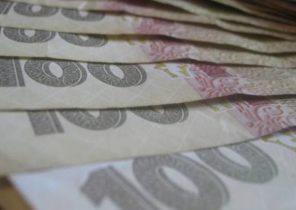Throughout the week, oil prices retain a positive attitude, holding at 40 dollars per barrel, making last week the most favourable after the sharp fall in oil prices that occurred in the recent past.
To date, the decision about reduction of oil production by OPEC countries+ gives positive results, in particular, thanks to the cooperation of these countries-oil producers like Iraq, Kazakhstan, Azerbaijan, Nigeria and Angola. Moreover, a positive trend increases hopes for a real rebalancing of the oil market.
Columnist of the American edition of OilPrice Alex Kimani has published a report which noted that some oil analysts predict that this stage is only the beginning, and that oil prices reached incredible heights. In particular, analysts at JPMorgan reiterated its previous forecast that oil prices will exceed $ 100 per barrel due to a glut of oil on the market, which has become a fundamental shortage of supply.
Head of the Department of oil and gas research of the American investment Bank JPMorgan in EMEA (Europe, middle East and Africa) Director Christian fry spoke quite optimistic, noting that oil prices could rise to $ 190 per barrel on the background of a sharp reduction in capital spending by the manufacturers. Recall that world oil prices exceeded $ 100 per barrel in 2014, and the price of 145 dollars per barrel — the highest figure recorded over the past two decades.
The struggle for survival
According to the columnist OilPrice, fry, which in 2013 predicted a decline in oil prices, today, indicates, a very large deficit of supply and demand, which is expected to occur in 2022 and could reach 6.8 million barrels per day by 2025, if OPEC or other producers of oil will maintain the same course.
As oil prices have reached the lowest level over the past few years, and the crisis caused by coronavirus infection covid-19, has seriously affected the demand, the us shale oil companies began to actively fight for survival. They reduced capital expenditures by about $ 85 billion in 2020 to maintain balance sheet liquidity and to maintain payments to shareholders.
According to the energy information administration (EIA) U.S. Department of energy, oil supplies will be reduced by more than 45 million barrels a day, if during the period from 2017 to 2025 will not be made investment in existing or new oil fields.
If we assume that global oil demand will decrease by 10 million barrels per day after the crisis caused by coronavirus infection covid-19, it still remains a huge gap between demand and supply, which will amount to about 17.5 million barrels per day, which will have a significant impact on oil production, if capital expenditures will remain at current levels over the next two or three years.
Strategy American companies for the extraction of shale oil
The situation may occur so that there will be a shortage of oil, if the level of capital expenditure will not grow. This, in turn, will lead to the fact that the oil price will not exceed 100 dollars per barrel, as predicted by JPMorgan and Christian Malcolm.
The recent fluctuations in oil prices indicate the uncertainty that has gripped the global energy markets. It should be noted that the world’s oil producers do not demonstrate coordinated work, so the traditional cycle of growth and decline in the oil industry is replaced by more rapid price fluctuations depending on changes in the energy production.
It makes price fluctuations less severe, but still hard to predict. Moreover, the constant change of information on the crude oil reserves by conducting exploration works for shale oil is a major factor in price changes. Also they are affected by long-term strategy to improve the fuel efficiency and the imbalance between world supply and demand. All the above is helpful for customers, but makes it difficult to plan for players of the oil industry.
But the main question is, can the American producers of shale oil to recover from the ongoing crisis as fast as they were able to do this in the past?
Recall that after the oil crisis of 2015-2016 the American shale oil companies managed to survive the Saudi price war, slashing costs by about 50% and attracting investors. These steps led to the stunning new growth phase in this industry. Moreover, when OPEC+ again started to cut oil production, the production of shale oil in the United States grew to 4 million barrels per day in just 3.5 years.
Unfortunately, this time the situation is developing quite differently. American companies for the extraction of shale oil are fighting for survival, especially after they cut capital expenditure by almost 30% in 2020.
Capital spending still has not returned to previous levels, which was before the last oil crisis, and this means that American companies for the extraction of shale oil is not much time to take any action, without causing significant damage to the work oil. And worst of all, that the sector of production of shale oil has long been mired in high debt.
A further rise in oil prices
According to analysts of wall street, the situation will remain unchanged as long as the competition between influential participants of the market the price of oil reaches a critical level. They also believe that Saudi Arabia and Russia will closely monitor the situation on the market of shale oil in the hope of getting big market share, but this strategy is quite risky for both parties, particularly for Riyadh.
American policy in the current oil crisis has mostly blamed Saudi Arabia, not trump. Most recently, senators from oil-producing States have threatened to withdraw military support from Riyadh. Moreover, they can indeed use tough measures against Saudi Arabia, if oil prices remain at a low level. It should be noted that the US has imposed new sanctions on Russia because of the “price war” between Moscow and Riyadh, and low oil prices only exacerbate the negative impact of us sanctions on the Russian economy.
Analysts at wall street not worried about price fluctuations for oil, but they probably will support the sector for the extraction of shale oil as soon as prices start to get close to 80 dollars per barrel. It should be noted that the price of oil in 80 dollars per barrel is the price at which the budget of the largest oil exporters — Saudi Arabia — will remain balanced.
Columnist of the American edition of OilPrice Alex Kimani believes that the rapid development of renewable energy sources limits the long-term benefits to be allocated to the oil sector, because it will make oil uneconomical. Last year, the BNP Paribas group, told CNBC that oil prices should remain in the range of 10-20 dollars per barrel in order for it to remain competitive in the key transport sector.







